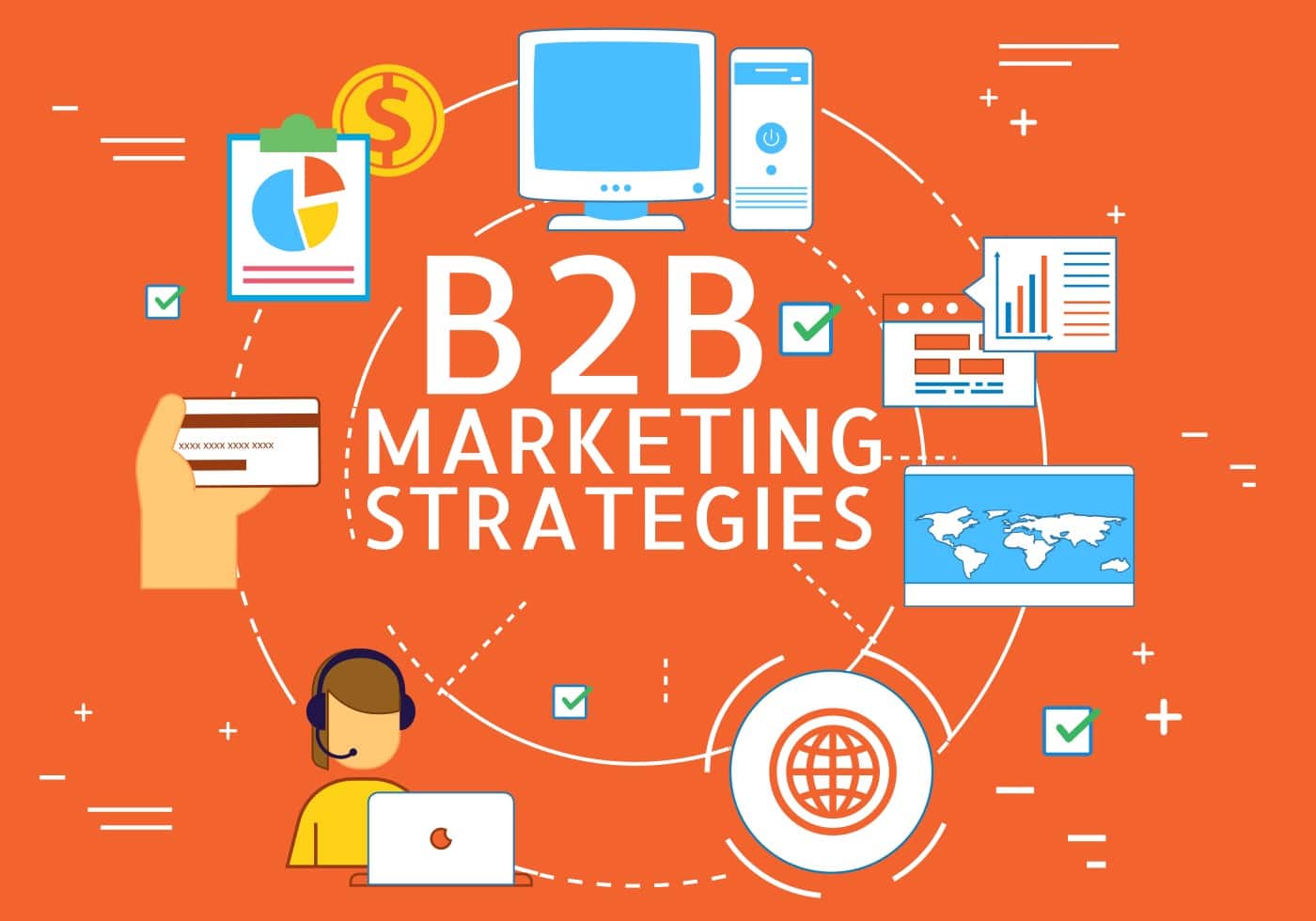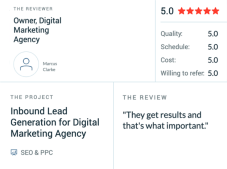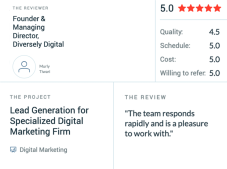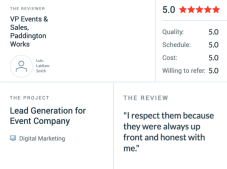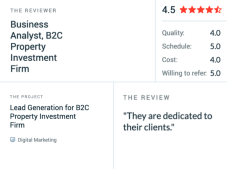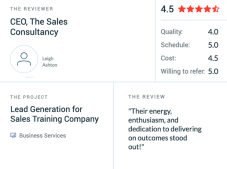How to Develop a B2B Demand Generation Strategy: 5 Proven Strategies For Winning
Are you struggling to generate leads and close sales in your B2B business? If so, don’t worry–you’re not alone. The good news is that developing an effective B2B demand generation strategy can have a huge impact on your company’s success.
In this article, we’ll give you five proven strategies for winning at B2B demand generation, from optimising your lead nurturing to breaking out the big gun: performance TV.
Creating a successful B2B demand generation strategy requires more than just a few tactics. You need to employ a holistic approach combining traditional and digital marketing strategies. From optimising your website for search engine visibility to creating content tailored for your target audience to leveraging performance TV—the possibilities are endless.
What Is B2B Demand Generation?
B2B Demand Generation is a marketing and advertising strategy that drives demand for your product or service. By leveraging a combination of traditional, digital, and performance TV marketing tactics, you can effectively reach, engage with, and convert potential customers into sales.
With the right demand generation strategy in place, you can create brand awareness while educating potential customers on how your business can benefit them. Ultimately, B2B demand generation helps you stand out against competitors and drive growth for your business.
How Do You Measure Demand Generation?
Measuring the success of your B2B Demand Generation efforts is essential to ensure that you are getting the return on investment (ROI) that you need. To do this, you should track key performance indicators (KPIs) such as conversion rates, qualified lead volume, and lifetime customer value.
You should also monitor metrics such as website traffic, email open rates, and impressions from advertising campaigns. By tracking these KPIs, you will be able to see how successful your demand generation campaigns have been and make any necessary improvements or adjustments. This data can help inform future marketing decisions and allow you to adjust your strategy in order to maximise ROI.
Proven B2B Demand Generation Strategies and Tactics
Regarding B2B demand generation, it’s essential to have a comprehensive strategy in place. Proven tactics such as content marketing, email campaigns, and social media outreach can help generate leads, build relationships with potential customers, and increase brand awareness.
By consistently creating high-quality content that resonates with your target audience, you can position your company as an industry leader and attract more qualified leads. Additionally, email campaigns are an effective way to reach out to your prospects on a personal level and nurture the relationship by providing valuable information or helpful resources.
1. Improve Your Demand Funnel Framework
Creating an effective demand funnel framework is essential for generating leads and driving sales. To do this, start by segmenting your target audience into distinct categories based on their needs and interests. This will allow you to create personalized content that speaks directly to each group.
Additionally, you should focus on creating multiple touchpoints throughout the customer journey in order to capture leads at every stage of the funnel. Utilising tools such as retargeting ads, automated emails, and landing pages can help you keep prospects engaged and improve conversion rates.
2. Integrate CRM and Marketing Automation
Integrating your CRM and marketing automation systems is critical for developing an effective demand generation strategy. By connecting these two platforms, you can keep track of all customer interactions in one place and use this data to create highly targeted campaigns that speak directly to each lead’s needs.
Additionally, you can set up automated processes to ensure that leads are nurtured throughout the entire sales process, from initial contact to purchase. By leveraging the power of both CRM and marketing automation together, you will be able to generate more qualified leads, improve conversion rates, and ultimately increase revenue for your business.
3. Optimize Your Lead Nurturing
Lead nurturing is an essential part of any successful demand generation strategy. By optimizing your lead nurturing process, you can ensure that leads receive the right content at the right time and move through the sales cycle more quickly. To optimize your lead nurturing process, start by creating customer personas that represent each of your target audiences.
This will allow you to craft content that speaks directly to their needs and concerns. Additionally, segment your leads into different lists so you can send them more personalized messages based on where they are in the sales journey. Finally, use analytics to track how well each campaign is performing so you can make adjustments as needed.
4. Refine Your Lead Scoring
Lead scoring is a necessary component of any demand generation strategy. It allows you to prioritize which leads are most likely to convert and gives you an indication of how much effort you should put into each prospect. To refine your lead scoring process, start by creating different criteria for each stage in the sales cycle.
For example, you could assign a higher score to leads that have interacted with your website more than once or who have opened multiple emails. Additionally, consider how well customers interact with your content and how quickly they respond when contacted. Finally, take into account customer feedback and reviews to gauge how likely they are to become paying customers.
5. Use Account-Based Marketing
Account-based marketing (ABM) is becoming increasingly popular as a way to drive demand generation. ABM allows you to develop and tailor campaigns specifically for the accounts you’re targeting. Whether it’s a small business or an enterprise-level organization, you can create custom messages that are tailored to the needs of each account.
Additionally, ABM allows you to track how customers interact with your content and what type of messaging works best. By using this data, you can further refine your approach and increase conversions. With ABM, you can make sure that each account is getting the attention they need and develop relationships with them on an individual level.
Conclusion
By utilizing the right tactics, you can effectively reach and engage with your target market and generate quality leads that convert into sales. So what are you waiting for? Start crafting the perfect B2B demand generation strategy today and make sure you’re always one step ahead of the competition!
FAQ
How can B2B marketers stimulate demand?
You want to attract prospects and create interest. You can do this by creating relevant content and releasing that content in many different ways. You can create marketing channels, release press releases, create a blog, host in-person events, create eBooks, utilize social media or have giveaways on your website.
What are the pillars of demand generation?
Messaging, distribution, reach, and optimization. These are just a few pillars that define demand generation. Learn more about how a successful demand generation strategy can help to nurture the long-term relationship between your brand and customers.
What is B2B lead generation tools?
B2B lead generation tools consist of software designed to assist with capturing leads. It’s an automated process, so you can focus on developing campaigns, not manually inserting lead data.



